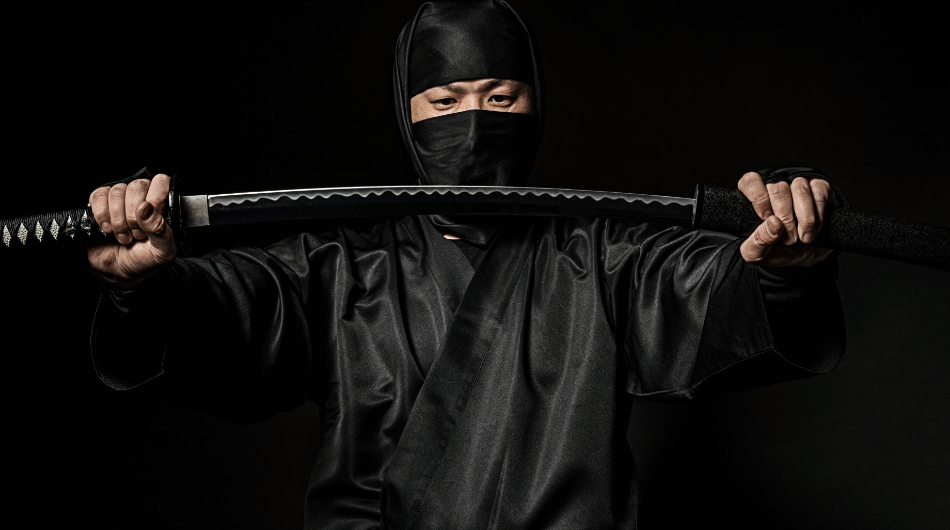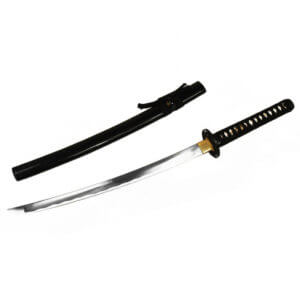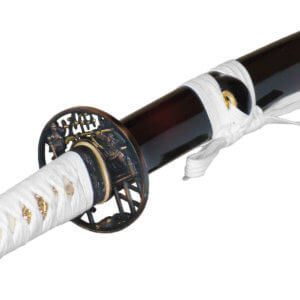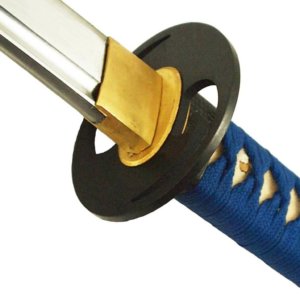Without exception, they are always dressed in black, their faces are masked, they are armed with daggers, swords and throwing stars and they usually appear and disappear unnoticed. This is how Japan's ninja are often described and portrayed today, especially in films.
The ninja are one of the legendary fighting groups from ancient Japan. But where do they come from, are all these legends true and what is their magic really about?
The fighters of the hidden: Mysterious and deadly!
They are spies and assassins with legendary abilities, characterised above all by their sudden appearances and disappearances. Ninja are fighters of the hidden.
In contrast to the knights of Japan - the samurai - they were therefore often considered dishonourable. Ninja did not belong to the noble samurai class, but this also freed them from the burdens of honour.
From this point of view, the Difference between Ninja and Samurai serious. The simple mercenaries were far removed from the elite class and were primarily regarded as underclass fighters.
The word ninja consists of two characters in the Japanese language. The first of these can be translated as "hide", the second denotes a person who is hiding. And that is precisely what makes the art of the old ninja so special.
In feudal Japan, they were considered masters of espionage, saboteurs and assassins. The female form is called "kunoichi", another term for the black fighters is "shinobi".
Until 1900, the ninja were called "Can" (literal meaning "space between"), which mainly referred to army agents.
In contrast to the samurai, the life of the ninja is barely documented. As a result, numerous myths and legends surround them. Even their training was carried out inconspicuously in public.
For example, an officially socially committed woman who looked after war orphans and homeless girls may well have been the owner of a ninja training school in secret.
Origin and development of Japan's ninja
It is therefore not surprising that the history of the ninja is also shrouded in darkness and the exact circumstances surrounding the development of the shadow warriors are barely known.
Because their martial art of Ninjutsu (in German "the method of perseverance and patience" or also "the method of secrecy") was also kept secret for centuries. Ninjutsu is not a directly definable art. It only developed into this over the years through experience.
Their history and that of the ninja is therefore mainly based on oral tradition and conjecture.
It is assumed that the ninja group originated in medieval Japan during the Heian period (794 to 1192 AD) - the starting point was a rather peaceful Buddhist order whose existence was threatened.
In order to defend themselves, warriors were needed who, of course, could not act in public. A regular army was not formed, but partisan fighters and assassins emerged from them, who operated in secret from the outset.

The traditions and skills were passed down from generation to generation, especially in the Iga and Koga regions. Countless schools were established; at the height of the Japanese Middle Ages, there are said to have been over 70 in this region alone.
From then on, the government and princes also utilised the skills of the shadow warriors and were hired for warfare - especially for espionage and covert combat missions. As a result, ninja schools spread throughout the country.
From the Meiji period (1868-1912) onwards, however, the services were used less and less and more and more ninja schools were closed. The martial art of ninjutsu was transformed into the sport of ninjutsu.
Myth and truth: masters of illusion and deception
However, the numerous stories about the legendary abilities of the ninja have survived.
It was said that they could walk on water, were invulnerable, could disappear without a trace and even had supernatural powers. In reality, however, they were just good tricks and skilful deception.
Distraction manoeuvres made silent disappearance possible - as countless magicians still use to this day.
To avoid attracting attention, ninja fed in such a way that they did not produce any body odours, which allowed them to move without being seen, heard or smelled. They were extremely fit and could move artistically. Jumping onto a roof during a distracting cloud of smoke was not a real problem for any ninja.
The martial art of Ninjutsu includes sporting and spiritual exercises. But it also includes techniques and knowledge from chemistry, psychology and meteorology.
In contrast to the samurai, ninja did not usually fight man-to-man. Their martial art was practised "undercover".

Arsenal of different tools: the weapons of the ninja
The ninja's arsenal of weapons was also special. Poison, explosives, smoke and blinding powder were just as much a part of it as collapsible bows, small crossbows and, later, pistols and rifles.
The concealed throwing weapons were particularly well known Shuriken and Shakewhich still give many films and series a characteristic look today.
But swords were also part of the ninja's weaponry. They were similar in appearance to samurai swords - but according to tradition, they also had secret hiding places for poison, throwing stars and the like.
Whether today's offered Ninja swords However, it is not possible to say with 100%iger certainty whether the weapons actually correspond to the weapons of the time. There is also no evidence that a ninja carried his sword on his back. There are also said to have been hidden swords in bamboo sticks.
It is also likely that other utensils were part of a ninja's equipment: Throwing anchors, dismountable ladders and other climbing equipment. The clothing was - contrary to today's black representation - rather inconspicuous and belonged more to everyday clothing.
This meant that chain mail could be hidden underneath unnoticed. But there was also ninja armour, which can be admired today in museums and private collections, but which was nowhere near as eye-catching and magnificent as samurai armour.
Ninja in modern society
It is impossible to say with certainty whether there are any true ninja left today. Some media report that Jinichi Kawakami is the last ninja still trained in Japan. Others claim that Masaaki Hatsumi is a trained student of one of the last ninja, who ran one of the last ninja schools in Japan until 2019.
Like the story, the present and the future of the ninja have once again faded into obscurity. No one can say whether and where the secret agents might be in action. What is certain is that the martial art of the ninja is still taught in schools - even in Germany.
The topic is still popular in manga and anime today. For example, the protagonists of the popular series Naruto fight using techniques called ninjutsu.






